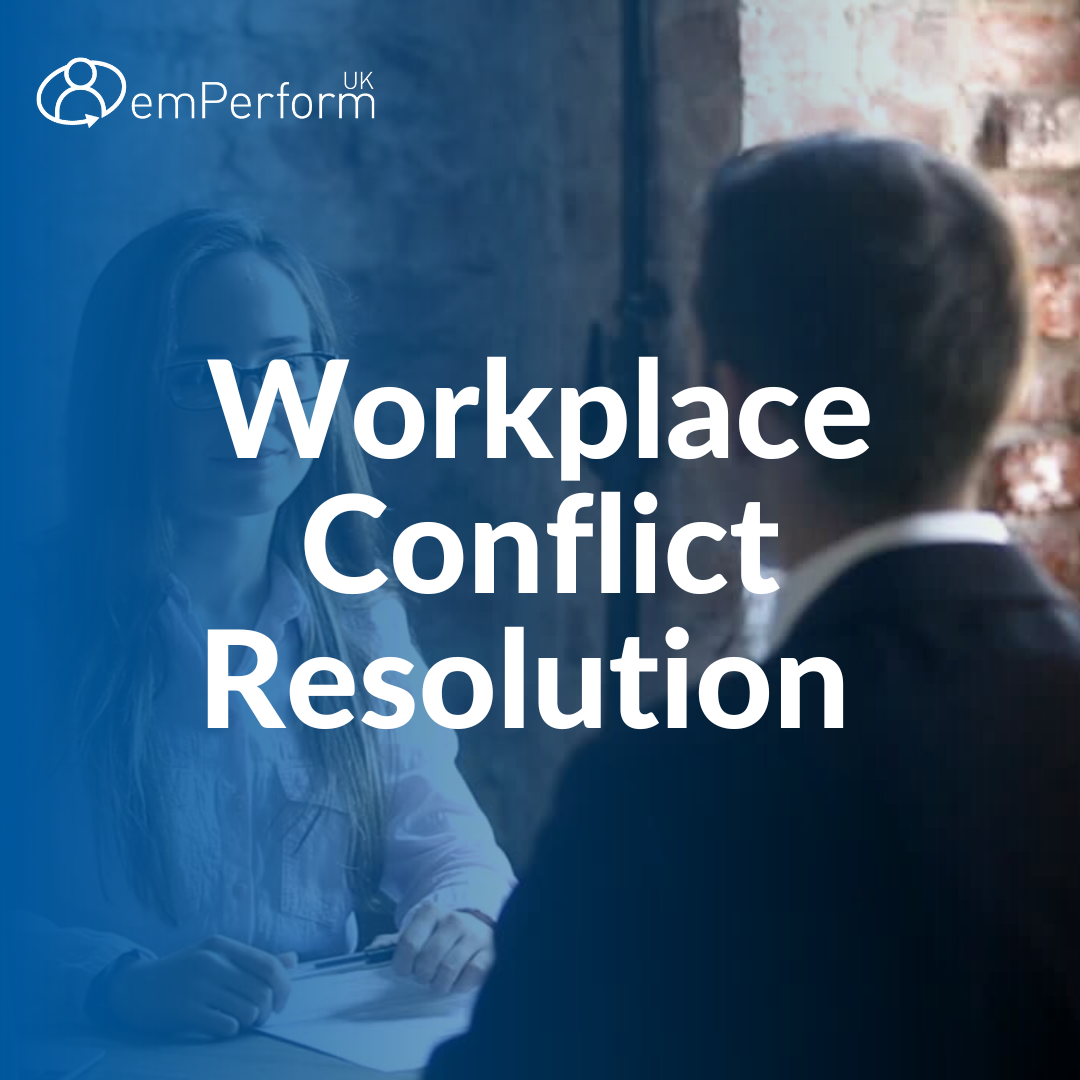
Workplace conflict is inevitable in any organisation, but how it is managed can make all the difference in maintaining a healthy, productive environment. Whether it’s due to personality clashes, performance issues, or stress, unresolved conflict can lead to low morale, decreased productivity, and even legal issues in severe cases. This guide will walk you through identifying the types of conflict, recognising signs of bullying and harassment, and navigating both informal and formal procedures to resolve conflict. You’ll also discover key tips for effective conflict resolution and the role of performance management software in preventing and managing workplace disputes.
What Does Workplace Conflict Look Like?
Workplace conflict can manifest in many ways, from minor disagreements between colleagues to more significant issues affecting entire teams or departments. Common signs include frequent disputes, passive-aggressive behaviour, drops in productivity, and noticeable tension during meetings or discussions. Recognising these early warning signs is key to addressing the root cause before conflicts escalate.
The financial impact of workplace conflict is substantial. According to Acas, UK employers face an annual cost of £28.5 billion due to conflict, which includes both management and resolution efforts. This breaks down to over £1,000 per employee each year and nearly £3,000 for each person directly involved in conflict. Beyond the financial strain, unresolved conflict can lead to low morale, increased absenteeism, and higher staff turnover, further affecting workplace culture and productivity. By addressing conflict early and implementing a proactive resolution strategy, organisations can minimise these costs while promoting a healthier, more collaborative work environment. A constructive conflict resolution strategy is essential for every HR toolkit, ensuring that conflicts are managed efficiently and constructively.

What Are The Common Causes
Understanding the root causes of conflict is the first step Towards effective resolution. Below are some of the most frequent triggers for workplace disputes:
Personality Clashes
Every workplace has individuals with diverse personalities, and sometimes these differences can result in misunderstandings or friction. For example, one person may prefer direct communication, while another may find it abrasive. Personality clashes often require open communication and empathy to resolve.
Performance Issues
Performance issues, such as one team member consistently missing deadlines, can cause conflict within a team. Other employees may feel overburdened by having to pick up the slack, leading to frustration and tension. In these cases, addressing the underlying performance issues is key to restoring harmony.
Differing Values and Beliefs
In a diverse workplace, employees may have varying values, beliefs, or cultural backgrounds, which can occasionally lead to disagreements. While diversity is a strength, it’s crucial to maintain an environment where differing perspectives are respected, and conflicts are addressed thoughtfully.
Stress and Pressure
High-pressure work environments, tight deadlines, and heavy workloads often lead to increased stress, which can become a catalyst for workplace conflict. When employees are under constant stress, they may have shorter tempers, become easily frustrated, or misinterpret others’ intentions. This heightened tension can produce an environment where misunderstandings and disagreements escalate quickly.
Communication Issues
Communication breakdowns are a frequent cause of workplace conflict. Misunderstandings often stem from unclear instructions, assumptions, or the failure to share key information. When communication falters, it can result in errors, unmet expectations, and increased frustration. Employees may feel overlooked or undervalued, which can lead to disagreements and strained relationships.

Recognising Bullying and Harassment
Bullying and harassment are serious forms of workplace conflict that require immediate and formal attention. Under the Equality Act 2010, harassment is unlawful and is defined as “unwanted conduct related to a relevant protected characteristic, which has the purpose or effect of violating an individual’s dignity or creating an intimidating, hostile, degrading, humiliating or offensive environment for that individual.” This includes behaviour linked to characteristics such as race, gender, sexuality, religion, or disability. For more on the importance of DEI in encouraging a safe and inclusive environment, check out our previous blog ‘Promoting Diversity, Equity & Inclusion (DEI) in the Workplace.’
In the UK, there is no legal definition of bullying. However, the Acas guide on bullying and harassment at work describes bullying as “offensive, intimidating, malicious or insulting behaviour, or an abuse or misuse of power that undermines, humiliates, denigrates, or harms the recipient.” Unlike harassment, bullying does not need to involve a protected characteristic and, on its own, cannot be the basis for a legal claim. Nonetheless, it demands serious attention and swift resolution.
Establishing secure channels for employees to report bullying and harassment is paramount. Methods such as anonymous surveys, and regular one-to-one check-ins provide employees with private, discreet avenues to seek the support they need, especially if they feel unable to voice their concerns publicly. For employers, engaging in ongoing feedback helps identify and address any issues of bullying or harassment early, so they can be resolved before they escalate.
Informal and Formal Procedures: Which to Use?
When managing workplace conflict, the choice between informal and formal procedures depends on the severity and nature of the issue. Informal conflict resolution is often the best initial approach for minor disputes. Addressing issues early can help prevent escalation. Begin by having one-on-one discussions with those involved to understand their perspectives. Next, bring team members together for open communication, encouraging everyone to share their ideas and potential solutions. It’s also important to follow up after the resolution to ensure that the conflict is fully resolved and does not reoccur. Formal procedures should be considered a last resort or implemented sooner if the conflict involves bullying or harassment. These procedures typically involve HR and require formal documentation of complaints, along with potential disciplinary actions based on the severity of the issue. When conflicts escalate or legal implications arise, a formal approach may be necessary to guarantee a fair resolution.

8 Tips for Managing Conflict Resolution
Successfully managing conflict requires practical strategies and proactive measures. Here are 8 tips for resolving workplace disputes:
Open Communication Channels
Encouraging open and honest communication is vital for preventing misunderstandings and promoting collaboration. Prioritise clear communication by inviting team members to share their thoughts in meetings or through surveys, ensuring every opinion is valued and psychological safety is maintained. When employees feel supported, they are more motivated to contribute to the organisation’s success. Utilising tools like 360-degree reviews and ongoing feedback helps keep teams aligned. For managers, addressing communication issues early and promoting upward feedback can resolve small problems before they escalate. Transparency in decision-making also reduces uncertainty and builds trust. Make sure employees understand how and why decisions are made, so they feel informed and involved.
Set Clear Expectations and Boundaries
It’s essential that all team members clearly understand their roles, responsibilities, and expectations. Establishing clear guidelines can help minimise conflicts arising from confusion or unmet expectations. When employees know their specific duties and how their contributions align with the company’s objectives, they gain a sense of purpose and direction. emPerform simplifies this process by allowing organisations to set and track SMART goals, performance objectives, and development plans. This not only ensures workforce alignment but also provides employees with the coaching and support they need to succeed.
Conflict Resolution Training
Providing conflict resolution training to managers and employees is crucial for equipping them with the skills to manage disputes efficiently. This training empowers individuals to navigate conflicts with confidence, developing a more harmonious work environment. HR can implement comprehensive programs that teach practical problem-solving strategies, communication techniques, and emotional intelligence. Ultimately, investing in conflict resolution training cultivates a culture of open communication and respect, leading to a more cohesive and productive workplace.
Encourage Collaborative Problem-Solving
When resolving conflicts, involve all parties in finding a solution. Use a collaborative approach where employees work together to identify the root cause and suggest solutions that benefit everyone. Regular team-building activities throughout the year can strengthen relationships and improve understanding among colleagues, making it easier to address conflicts and support one another when issues arise.
Promote DEI & Respect
Creating an environment where respectful dialogueue can thrive is vital in every workplace. Respect should be demonstrated at all levels, regardless of race, gender, age, sexual orientation, disability, or religion. Encourage all employees, including managers, to listen to each other’s perspectives without interruption or judgment. HR teams are vital in promoting respect and DEI throughout the organisation. As champions of workplace culture, they lead initiatives to integrate DEI principles into every aspect of the company. This includes implementing training programs that educate employees and leaders about inclusivity and equitable practices. By consistently applying these initiatives, from recruitment to career development, diversity and inclusion become core values that shape the organisation. Tools like emPerform’s Performance Management Software can track DEI metrics, monitor progress, and identify areas for improvement. Incorporating DEI goals into performance reviews ensures these initiatives contribute to the organisation’s overall success while developing a respectful workplace culture that minimises conflict and equips teams to address it effectively when it arises.
Focus on the Issue, Not the Person
When addressing conflicts, it’s essential to concentrate on the specific issue rather than the individuals involved. This approach minimises the likelihood of personal attacks and facilitates a more objective and constructive problem-solving process. By focusing on the problem at hand, you create an environment where participants can express their views and concerns without feeling threatened or defensive. Encouraging a discussion centred on the issue allows for a deeper exploration of differing perspectives and potential solutions. It promotes a collaborative mindset, where employees can work together to find common ground and develop mutually beneficial resolutions.
Act as a Neutral Mediator
As a manager or leader, it’s important to act as a neutral mediator during disputes. Avoid taking sides, and instead focus on facilitating a productive resolution process. Employees should be able to trust that you are managing the situation fairly and impartially. Research from Gallup shows that employees who strongly trust their organisation’s leadership are 4.0 times more likely to be engaged and 58% less likely to be actively seeking a new job. By demonstrating neutrality and fairness, you can help build that trust, cultivating a more engaged workforce.
Follow Up Post-Resolution
After reaching a resolution, it’s crucial to follow up with the parties involved to confirm that the conflict has been genuinely resolved and to mitigate the risk of future issues. This follow-up demonstrates your commitment to maintaining a positive work environment and allows you to assess whether the agreed-upon solutions are successful. During this follow-up, engage in open discussions to gather feedback on the resolution process and any lingering concerns. By actively seeking input, you signal that you value their perspectives and are invested in their well-being.

Utilising Performance Management Software
Managing conflict in the workplace is paramount for maintaining a positive, productive environment. By understanding the common causes of disputes and employing initiative-taking strategies, such as open communication, conflict resolution training, and the promotion of diversity, equity, and inclusion, organisations can create a culture that minimises conflicts and empowers employees. Performance management software like emPerform plays a vital role in this process by streamlining communication and feedback channels while tracking progress on essential initiatives. By prioritising conflict resolution, organisations can not only improve relationships among team members but also drive overall success.
Book a FREE demo today or contact us for any advice on performance management.


Recent Posts